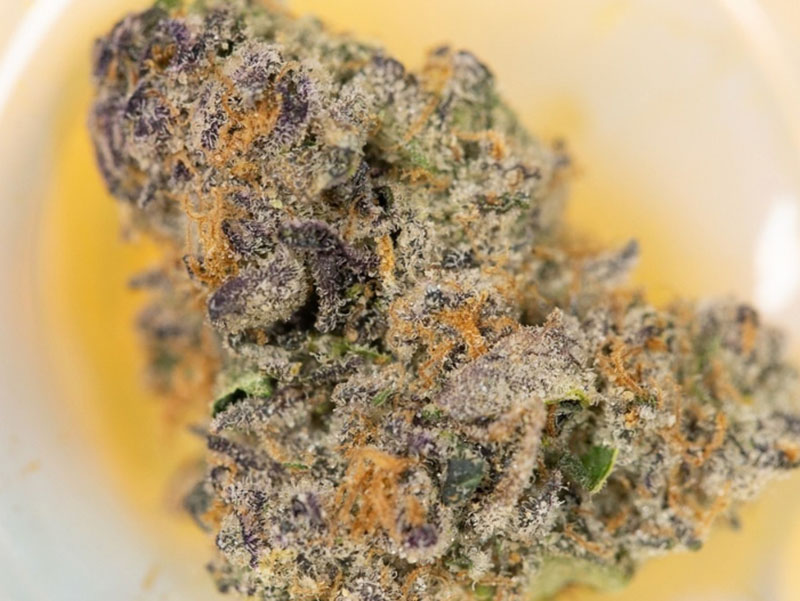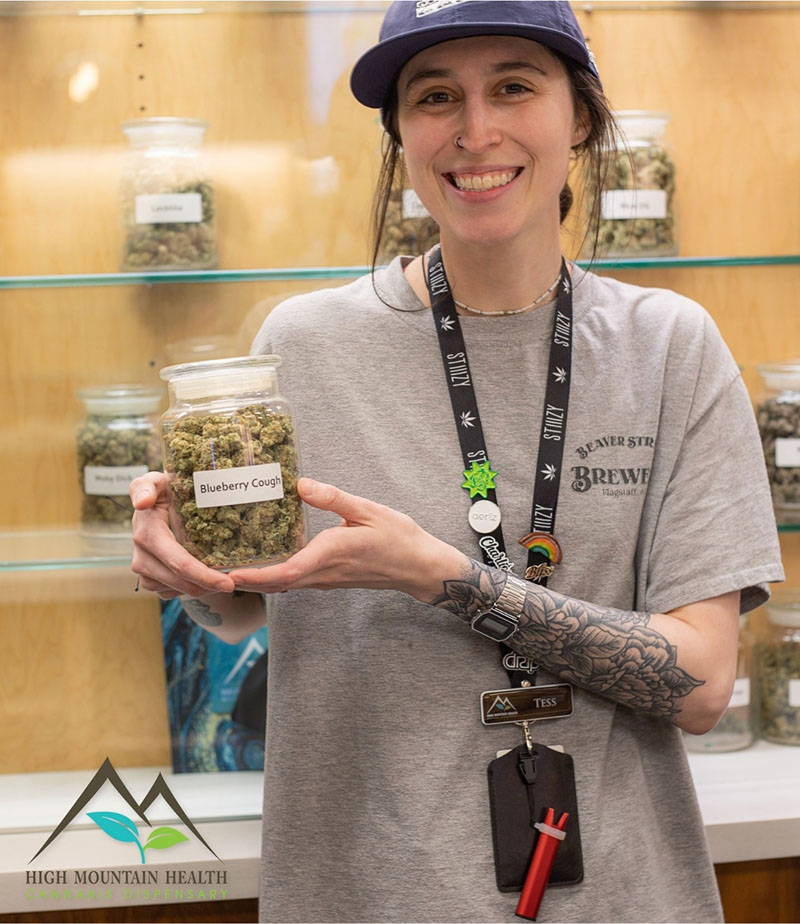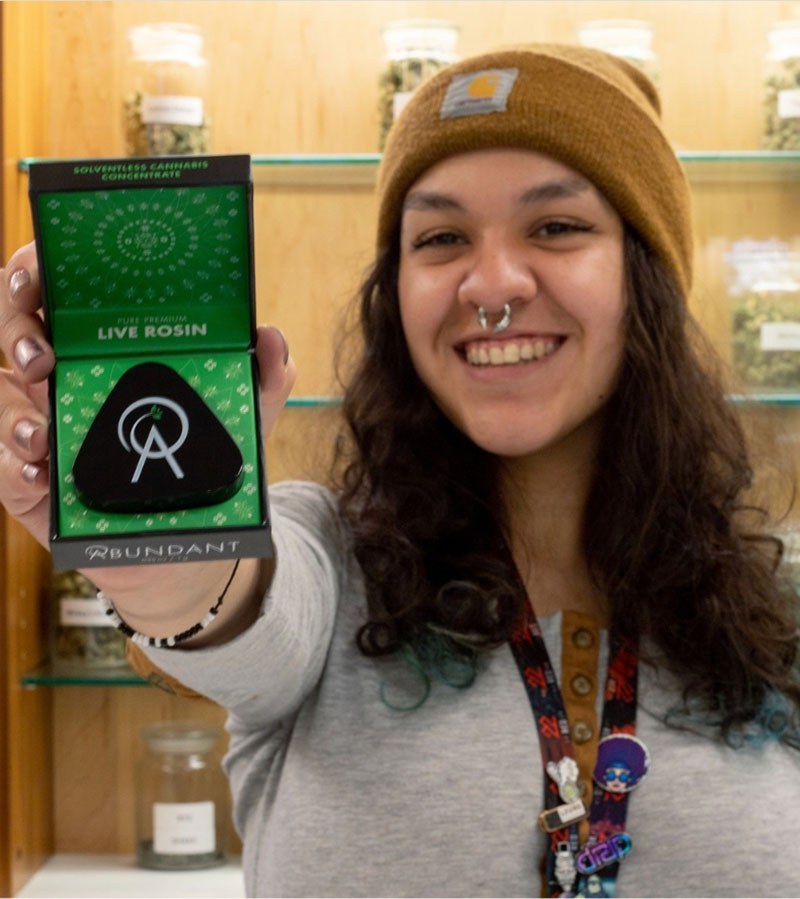The Differences Between THC and THC-A
By Zachariah Finning
August is National Wellness Month and part of the wellness obtained by medical marijuana is in knowing the differences between major cannabinoids. Mostly everyone involved in the medical cannabis industry, either as a patient or a dispensary agent, knows about the two main cannabinoids CBD and THC. However, there are over 100 distinctly known cannabinoids to science at this day in age. Specific cannabinoids can have very similar effects, yet some do have differences in their chemical makeup and the way they interact with our endocannabinoid systems. These differences are definitely worth noting as they will only help you in your journey to achieve overall wellness through medicinal marijuana products. With so many cannabinoids now known it may seem daunting, or even an impossible task, to differentiate between any of them but rest assured this is not the case. As with the medicinal industry as a whole science is now leading us to better understandings of these individual cannabinoids. In this month’s blog, we are going to look at the primary differences between a well-known major cannabinoid, THC, and a more recent up-and-coming player, THC-A. Without further introduction let us jump right into it and see what we can learn about the differences between these compounds.
To better understand the differences between these two compounds we first must understand each of these compounds in their own right. We will begin with the most sought out of all the cannabinoids, the well-known THC. This is the compound primarily responsible for failed drug tests coming back positive for marijuana. It is the chemical compound that’s held accountable for the profound psychological effects marijuana has on the human mind (S1). In other words, it is the main cannabinoid associated with the “high” that comes along with smoking or ingesting marijuana. It has also been shown to give relief to neuropathic pain (S2). THC is a lipid compound located in the resins excreted by the glands of the marijuana plant. These glands are mostly found in and around the reproductive organs of the plant (S1). It was the first cannabinoid to be isolated and studied in a scientific environment. THC was originally discovered by Raphael Mechoulam in 1969 at the Weizmann Institute of Science in Israel (S2). The chemical formula of THC is made up of multiple bonds of Carbon, Hydrogen, and Oxygen and in scientific formulas looks like this: C21H30O2. Technically this formula describes multiple isomers (isomers being two or more compounds with the same chemical formula but difference in their arrangement of atoms) but the term is mostly associated with the Delta-9-tetrahydrocannabinol isomer, in simpler terms Delta9-THC (S2). There are other known delta compounds in the medicinal industry today such as Delta8-THC but we will save that for another blog. The lipid is thought to have evolved in the plant’s evolutionary adaptation to fight against insect predation, ultraviolet light, and ironically enough environmental stress (S2).
In getting to know our next compound things can start to get a little more scientific but may also be explained in simpler terms. THC-A stands for Tetrahyrdocannabinolic Acid. It is the acid-based precursor to the active compound THC which we previously discussed (S3). This simply means that THC-A is the compound that will eventually become THC over time. THC-A is made up of the same compounds as THC and its’ scientific formula is C22H30O4. THC-A is primarily found in fresh undried cannabis plants. This compound rapidly decarboxylates into THC during the curing and drying processes of the plant (S3). Decarboxylation is a process defined as the removal or elimination of a carboxyl from a molecule (S4). Simply put this means the removal of a carbon atom from a carbon chain. Notice how THC’s carbon bond is 21 and THC-A's is 22. This process of “decarbing” ultimately results in THC having one less carbon atom than THC-A does. Decarboxylation of remaining THC-A into THC also occurs under extreme and rapid heating like when cannabis is combusted (smoked), vaped, or baked into edibles (S3). THC-A has been found to be a major constituent in resin-based concentrates including hash oil and hashish. When produced from high THC fresh plant materials THC-A is found to make up 50-90% of these concentrates by weight (S3). THC-A does differ from THC drastically in both its chemical makeup as well as how it will interact with the body.
Now that we can recognize the individual compounds in their own light, we can begin to discuss the technical differences between these two compounds who share such similar designations. To start off the molecules that makeup THC-A are bigger in size than the molecules that make up THC (S5). This results in THC-A's molecules being unable to bind to our body’s receptors located within the endocannabinoid system (S5). In contrast, and explained in a previous blog Cannabis 101, THC does interact directly with the endocannabinoid system within our body. In doing so it bonds directly with the CB1 receptor located primarily in the brain’s frontal cortex. This is why it produces the sought out “high” as well as other mind-altering effects such as anti-anxiety and anti-depressant properties. Now just because THC-A molecules cannot bind to the cannabinoid receptors directly and give us the mental effects does not mean there are no benefits to THC-A. As mentioned previously THC-A is found in heavy concentrations within fresh and undried cannabis plants. Along with the availability of THC-A raw cannabis provides us with a host of benefits. it is rich in vitamins, minerals, and antioxidants (S5). It is also high in fiber, omega-3 fatty acids, calcium, folate, iron, and vitamins C and K (S5). THC-A is becoming to be known as a great non-psychoactive alternative to many of the same benefits that we get from THC. Anecdotally it has been known to fight appetite loss, nausea, inflammation, and pain (S5). There is even some evidence to support THC-A's neuroprotective properties which show potential for the compound to combat the symptoms of neurodegenerative disorders such as Alzheimer's (S6 & S7). Although THC-A will never bond directly to our endocannabinoid systems in and by itself it seems that it does provide a multitude of other benefits known to cannabis. THC-A can be a great compound for beginning patients or those who prefer no psycho-activity.
Most medicinal patients would know how to ingest THC, for its benefits, in its’ many forms. This would include smoking, vaping, eating edibles, and using topical lotions or salves. But what if one is interested in ingesting THC-A, what would they do then? It just so turns out that the number of ways to ingest the raw cannabis compound is pretty much determined by your imagination. You could certainly eat the plant like any other leafy green but that might not be so appetizing or easily swallowed(S5). Other suggestions are adding it to a salad or a salad dressing after fine grating the plant. You could also add it into a sauce or gravy after said sauce or gravy has been cooked again as a fine powder topper. Some also suggest juicing the raw cannabis plant as a way to obtain more substantial amounts of THC-A for ingestion (S8). This makes ingesting the raw plant a little easier and certainly sounds more desirable. All you need to begin your cannabis juicing experience would be raw cannabis, go figure, and a blender or juicer. Depending on whether you are juicing cannabis leaves or buds will influence which device you will utilize (S8). If you are looking to juice your buds use a blender but if you only have left to work with a standard juicer will work best (S8). Multitudes of recipes can be found online. You can juice cannabis by itself but adding any vegetables or fruits of your liking to the blend will not alter the ingestion of raw THC-A available to you. It will also most likely make it a little easier to enjoy. Another way to ingest THC-A would be in its isolated form. In select medical and recreational states and dispensaries, it can be found in the form of a white crystalline powder (S3). This powdered form of THC-A can be encapsulated and swallowed. It can also be used in vaporization devices such as a dab rig (S3). It should be noted that when using the vaporization method of ingestion your THC-A powder will be converted very rapidly into THC thus providing an increased euphoric and psychoactive effect (S3). I would recommend this for those seasoned medicinal patients looking to experience another level of THC’s mental effects.
Knowing your cannabinoids not only increases your chances of achieving whatever wellness means to you through medicinal marijuana but also broadens the options and forms of medications you have available. When I first entered the medicinal industry I almost certainly only knew of THC and CBD. I had never heard of things such as THC-A, THC-V, CBG, or CBN (just to name a few). Yet as I have come to understand my own meaning of wellness it only makes sense to study up on and try to understand the sometimes subtle and at other times drastic differences between these varying compounds found within the marijuana plant. Some people have a true need for the heavy mental effects supported by the binding of THC to the CB1 receptor in the brain. Yet others are trying to overcome things such as severe inflammation or degenerative diseases. For them, a more bodily-focused compound may do the trick. CB1 receptors are primarily found within our brains but CB2 receptors can be found all throughout our bodies. THC-A although in its’ infancy of study has already shown such promise as another purposeful cannabinoid in the medicinal marijuana industry. In time as more scientific and anecdotal evidence comes to light may be even more benefits of this acidic precursor to THC will be uncovered. Neither THC nor THC-A has the right to be labeled as “better” than the other; rather like all 113 different cannabinoids within cannabis, they most likely will be able to help in very different ways both in ingestion and relief.
Sources
S1. https://www.livescience.com/24553-what-is-thc.html
S2. https://en.wikipedia.org/wiki/Tetrahydrocannabinol
S3. https://en.wikipedia.org/wiki/Tetrahydrocannabinolic_acid
S4. https://www.merriam-webster.com/dictionary/decarboxylation
S5. https://papaandbarkley.com/learn/everything-you-need-to-know-about-thca-vs-thc/
S6. https://pubmed.ncbi.nlm.nih.gov/28853159/
S7. https://pubmed.ncbi.nlm.nih.gov/30405366/
S8. https://www.viridelife.com/wellness/juicing-cannabis-for-thca












